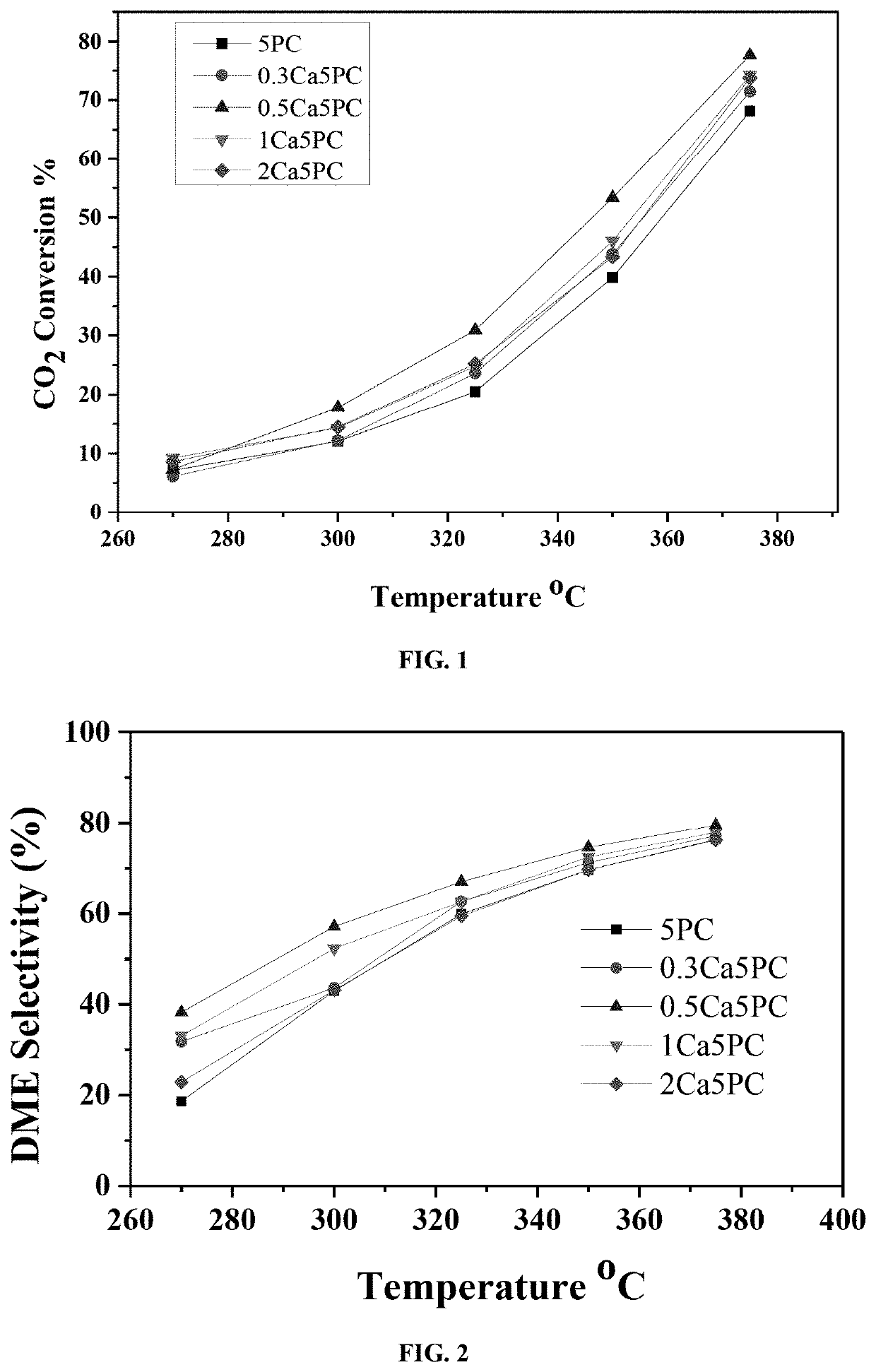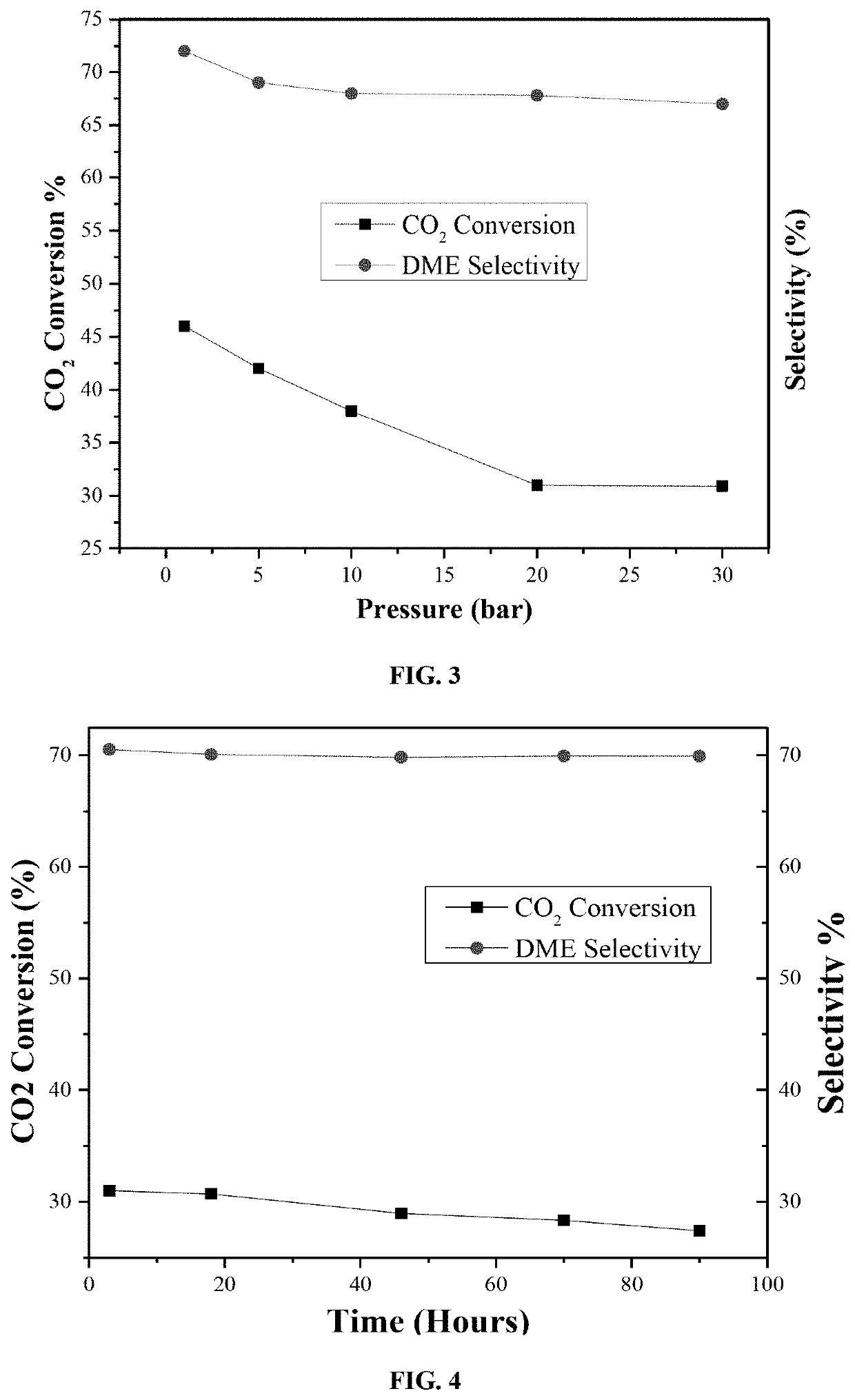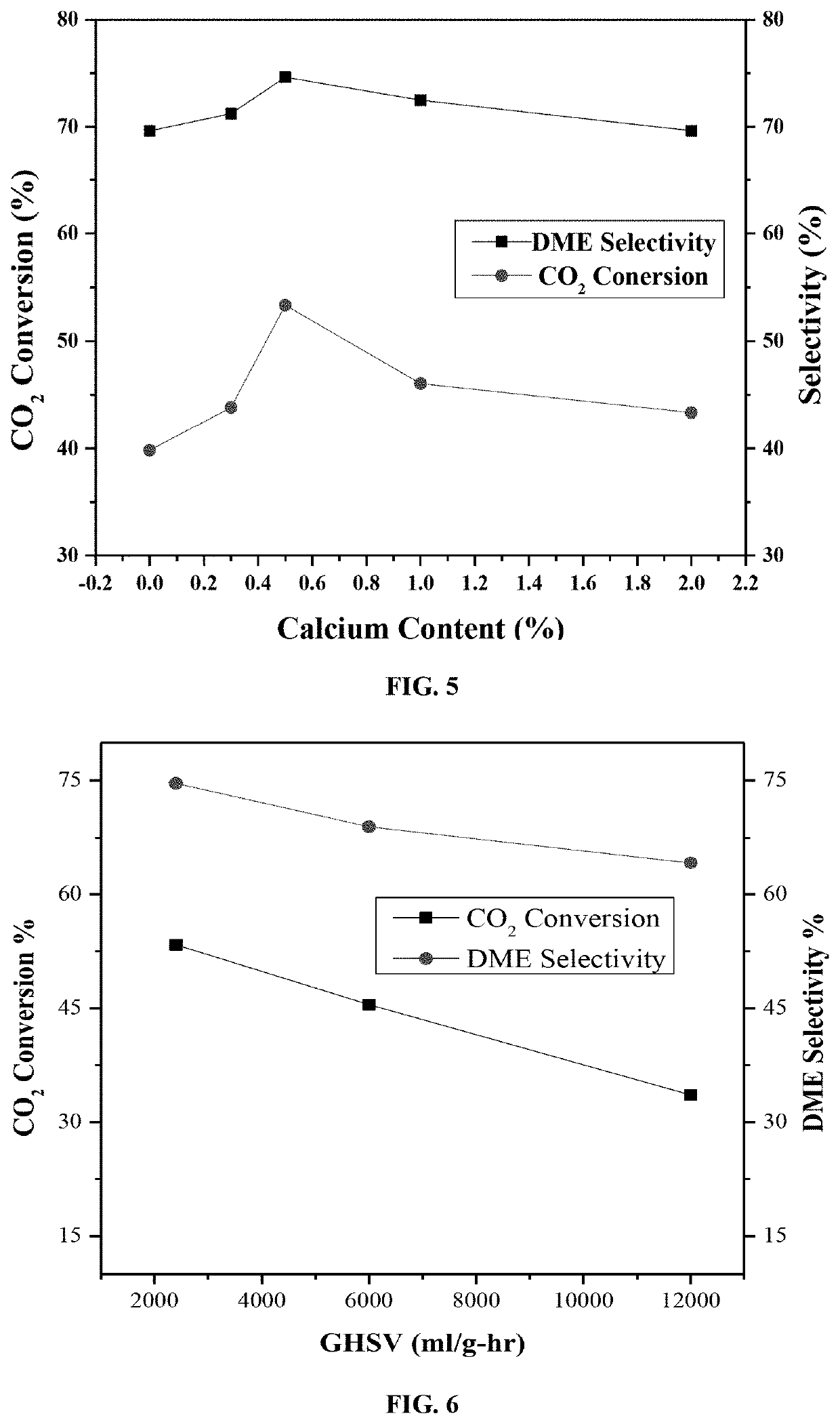Ceria supported palladium/calcium catalyst for hydrogenating co2 to dimethyl ether
a technology of palladium/calcium catalyst and dimethyl ether, which is applied in the direction of catalyst activation/preparation, metal/metal-oxide/metal-hydroxide catalyst, etc., can solve the problem of increasing the amount of cosub>2 /sub>emission, affecting the carbon efficiency of the process, and having a detrimental effect on the environment, so as to reduce the co2 conversion and improve the catalyst performance. , the selectivity of the catalys
- Summary
- Abstract
- Description
- Claims
- Application Information
AI Technical Summary
Benefits of technology
Problems solved by technology
Method used
Image
Examples
example 1
Preparation of Pd / CeO2 Catalyst
[0089]The catalyst was synthesized via a sol-gel preparation method. In a typical preparation procedure for 2.0 g 5%Pd / CeO2 sample, 0.2165 g Pd salt (palladium nitrate) and 4.794 g of cerium salt (cerium nitrate) were dissolved into separate beakers filled with 30 cm3 deionized water The solutions were heated at 50° C. for 15 minutes applying continuous stirring. An aqueous solution containing citric acid (7.5522 g in 30 cm3 deionized water) present at 1:3 molar ratio of Pd and Ce metal ions to citric acid was also heated at 50° C. for 15 minutes. At first, the citric acid solution was added drop wise to the Ce salt solution, and the mixed suspension of Ce salt and citric acid was left to heat farther at the same temperature for 10 minutes. Then the Pd salt solution was added drop wise into the mixed suspension of Ce Salt and citric acid. The resulting mixture was heated at a temperature of 90° C. using an electrically driven heating plate with necessa...
example 2
Preparation of Ca-PcliCeO2 Catalyst
[0090]The catalyst was synthesized via a sol-gel preparation ethod. In a prototypical preparation procedure for 2.0 grains 0.5Ca5Pd / CeO2 sample, 0.2165 g of Pd, 0.2362 g Ca and 4.6925 g of Ce salts were each dissolved into separate beakers filled with 30 mL deionized water, and heated at 50° C. for 15 minutes with continuous stirring. An aqueous solution of citric acid (8.0356 g. 30 mL deionized water) with citric acid present at 1:3 molar ratio of Pd and Ce metal ions to citric acid was also heated at 50° C. for 15 minutes. At first, the citric acid solution was added drop wise to the Ce salt solution and the mixed suspension of Ce salt and citric acid was left to heat further at the same temperature for 10 minutes. Then Pd salt solution was added drop wise into the mixed suspension of Ce salt and citric acid, which was followed by the addition of the Ca salt solution. The resulting mixture was heated at a temperature of 90° C. using an electrical...
example 3
Catalytic Activity Testing of Ceria Supported Pd
[0091]Catalytic activity tests of the disclosed catalyst samples were carried out in a MA-Effi reactor (PID Eng.& Tech., Spain) equipped with Bronkhorst mass flow and temperature controllers. The catalyst samples were tested at a temperature range of 270-350° C. employing a gas mixture with composition of CO2: H2=1:3 (Vol. ratio). Prior to each reaction, samples were reduced at 550° C. with 20 cm3 min−1 H2 flow (≥99.999%-Grade A) for one hour at atmospheric pressure.
[0092]In a general procedure, 0.5 grams of catalyst sample was placed into the stainless steel tubular reactor (i.d. 9.1 mm) and the temperature was raised in Ar flow of 15 cm3 min−1, (99.99%-Grade A) with a ramping rate of 5° C. / min. Once the reaction temperature was established, the H2 flow is turned on for 60 minutes. After reducing the catalyst sample, the temperature was brought back to reaction temperature under Ar flow.
[0093]The composition of product stream catalyze...
PUM
| Property | Measurement | Unit |
|---|---|---|
| temperature | aaaaa | aaaaa |
| pressure | aaaaa | aaaaa |
| weight | aaaaa | aaaaa |
Abstract
Description
Claims
Application Information
 Login to View More
Login to View More - R&D
- Intellectual Property
- Life Sciences
- Materials
- Tech Scout
- Unparalleled Data Quality
- Higher Quality Content
- 60% Fewer Hallucinations
Browse by: Latest US Patents, China's latest patents, Technical Efficacy Thesaurus, Application Domain, Technology Topic, Popular Technical Reports.
© 2025 PatSnap. All rights reserved.Legal|Privacy policy|Modern Slavery Act Transparency Statement|Sitemap|About US| Contact US: help@patsnap.com



